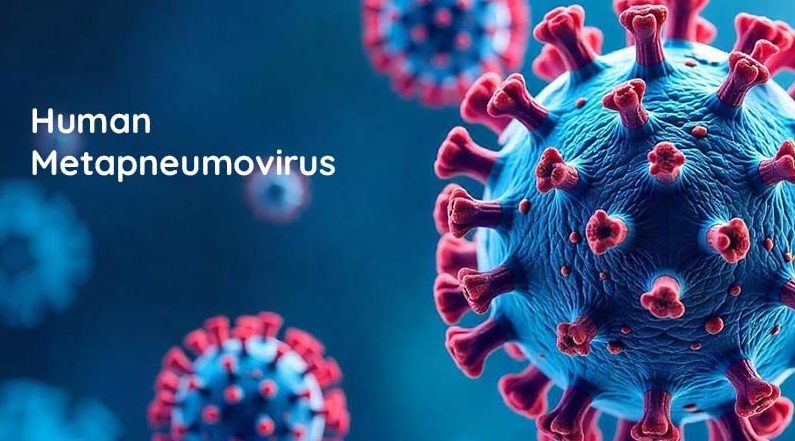Human Metapneumovirus (HMPV) is caused by the Metapneumovirus (a type of paramyxovirus), which targets the respiratory system and is a significant cause of upper and lower respiratory tract infections (URTI and LRTI) in both children and adults. HMPV is distributed globally and exhibits a seasonal pattern similar to that of influenza viruses. Initially recognized as a primary cause of respiratory tract infections in children under one year of age, HMPV has since emerged as a significant contributor to respiratory illnesses in adults.
In adults, HMPV is a notable cause of acute respiratory diseases, especially among individuals over 65 years of age and those with underlying conditions such as chronic obstructive pulmonary disease (COPD), asthma, cancer, or immune compromised states, including HIV infection or post-transplantation status.
HMPV transmission occurs primarily through direct or close contact with contaminated secretions, such as saliva, droplets, or large-particle aerosols. Indirect transmission may also occur by touching contaminated surfaces, such as doorknobs or handles, followed by contact with the eyes, nose, or mouth. People infected with HMPV often present with flu-like symptoms, including fever, runny nose, body aches, sore throat, and headache.
Severe cases may progress to pneumonia or bronchitis, characterized by difficulty breathing, chest pain, wheezing, fatigue, and persistent fever. Diagnosis of HMPV infection can be achieved through various techniques, including viral culture, reverse transcriptase-polymerase chain reaction (RT-PCR), antigen detection, and serological testing. Among these, PCR testing is the most reliable diagnostic method, providing accurate results within a few hours.
The COVID-19 pandemic has brought significant changes to public health practices, teaching individuals and healthcare systems how to prevent the spread of respiratory illnesses like HMPV. The limited spread of HMPV is largely due to these lessons. Simple habits such as frequent hand washing, wearing masks, and practicing good respiratory hygiene – like covering coughs and sneezes, remain effective in reducing the transmission of airborne viruses.
People are now more alert to symptoms like fever, cough, and difficulty breathing, and they seek medical care earlier or choose to stay home when feeling unwell, which helps prevent the virus from spreading. Health care systems that were strengthened during COVID-19, such as rapid testing using PCR and monitoring for outbreaks, are now being used to quickly identify and control HMPV cases. In crowded places like markets, buses, or hospitals, many continue to wear a mask, which adds an extra layer of protection. By maintaining personal space and staying cautious, we can keep ourselves and others safe from infections like HMPV.
Treatment for HMPV infection remains primarily supportive, as no specific antiviral therapy is widely available. However, ribavirin has demonstrated antiviral and immunomodulatory effects. Palivizumab (Synagis®), a humanized monoclonal antibody, has shown preventive efficacy in infants at high risk of infections. Similarly, motavizumab, a monoclonal antibody developed as an improvement upon palivizumab, provides a potential model for future antibody-based therapies targeting HMPV. Currently, no vaccine is licensed for HMPV.
HMPV remains a significant respiratory pathogen, particularly affecting children, elderly, and immune-compromised individuals. The preventive measures, diagnostic advancements, and heightened public health awareness cultivated during the COVID-19 pandemic have provided a robust framework for managing the spread of HMPV. Sustained efforts in research, surveillance, and public health infrastructure will be critical to preventing widespread outbreaks and developing effective treatments and vaccines for HMPV.
(Authors are Research Scholars, NDRI, ICAR-SRS Bangalore. Feedback: [email protected])








